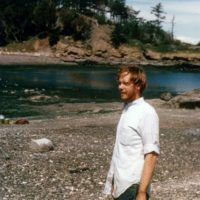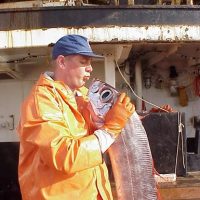Filter Results
Centennial Story 6: Fred Allendorf (MS, 1973; PhD, Fisheries & Genetics, 1975)
I began graduate school at the College of Fisheries in 1971 after graduating from Penn State. I had worked in the genetics lab of Jim Wright at Penn State, and he recommended that I attend grad school at UW because a former student of his (Bill Hershberger) had recently joined the Fisheries faculty.
The College of Fisheries was not a good place to study genetics in the early 1970s.
Centennial Story 5: Standish (Stan) K. Allen, Jr (PhD, 1987)
I admit that my undergraduate experience was underwhelming. However, eventually (and fortunately) I found my way to the University of Maine to study for an MS degree in Zoology. In Maine, there were two seminal developments for my career: I discovered shellfish aquaculture and was fortuitously appointed as research assistant on a project to make triploid salmon. In time, these two paths merged, and I was integrally involved in the creation of the first triploid shellfish—oysters, clams, and scallops.
Read moreMassive death wave of sea birds was caused by a marine heat wave
A marine heat wave called The Warm Blob parked itself over the North Pacific Ocean in 2014-15, and has now been determined to be responsible for an unusually large mass mortality of Cassin’s Auklets. Volunteers involved in three citizen science projects (COASST, BeachWatch, BeachCOMBERS) scour beaches from California to British Columbia, and reported thousands of dead Cassin’s Auklets at the same time that the Blob was present.
Read moreBetter measures of citizen science
Science can often benefit from broad participation in data collection by the public. For example, people recording their bird sightings in the eBird app has led to multiple scientific papers. Now a new paper provides valuable advice on how to set up and run such citizen science projects, including how to start a citizen science project, how to better collect data, and how to measure the impact of such projects.
Read moreMoving from single-species management to ecosystem management
Ecosystem-based fisheries management (EBFM) has become popular in recent years, but there is broad debate about what it means and how to implement it. At its simplest level, EBFM involves improving fisheries management by moving beyond management designed for single species, towards considering interactions that are important for entire ecosystems. Part if the reason this is difficult, says a new paper, is that perceptions of what counts as EBFM differ among stock assessment scientists, conservationists, ecologists, and managers.
Read moreCombining trawl and acoustic surveys to assess the status of the largest U.S. fishery
Many species of fish spend some of the time on the ocean bottom, and some of their time far off the bottom, which makes them hard to survey. Acoustic surveys (that bounce sound off fish schools), can estimate the midwater component of so-called “semipelagic” fish, while trawl surveys can measure the portion on the bottom. Now a new method has been developed that combines data from both types of surveys into a single estimate using information about the environment (bottom light, temperature, sand type, and fish size).
Read moreA whole new ocean zone is needed for these fish species
Scientists currently classify groups of reef species by the depths at which they occur, with the so-called “mesophotic” species living at depths of 40-150 meters. Now, though, new data suggests that an additional depth zone is needed for reef species living in the coral reef twilight zone, to be called the “rariphotic” zone, covering the depths of 130-310 meters (400-1000 ft).
Read moreStunning footage of bizarre mating anglerfish with glowing cat’s-whiskers fin rays
In a world’s first, a mating pair of anglerfish is observed in the wild, evoking awe in SAFS professor Ted Pietsch, who comments in UW Today on the video footage by researchers Kirsten and Joachim Jakobsen aboard a submersible run by the Rebikoff-Nigeler Foundation. Only 14 females (and no males) of this species have ever been recorded, all collected in jars and none observed alive in the ocean.
Read moreOld-growth fishes are going missing through fishing
In 2011, National Marine Fisheries Service announced the end of overfishing in the U.S. This achievement was considered an important milestone for fishery management. Six years later, a study in Current Biology by Dr. Lewis Barnett (previous postdoctoral researcher) and Prof. Trevor Branch from School of Aquatic and Fishery Sciences revealed a significant decline of old-growth fishes around globe, including the U.S.
Read moreCentennial Story 4: John C. Field (PhD, 2004)
I began my fisheries career in Santa Cruz, California, when I took a night job as a deckhand on a local fishing boat while also taking a course in biological oceanography from the University of California Santa Cruz. The course included a section on climate variability and the impact on fisheries resources, with a focus on the classic story of the rise and fall of both the California sardine fishery and the Peruvian anchoveta fishery.
Read more

